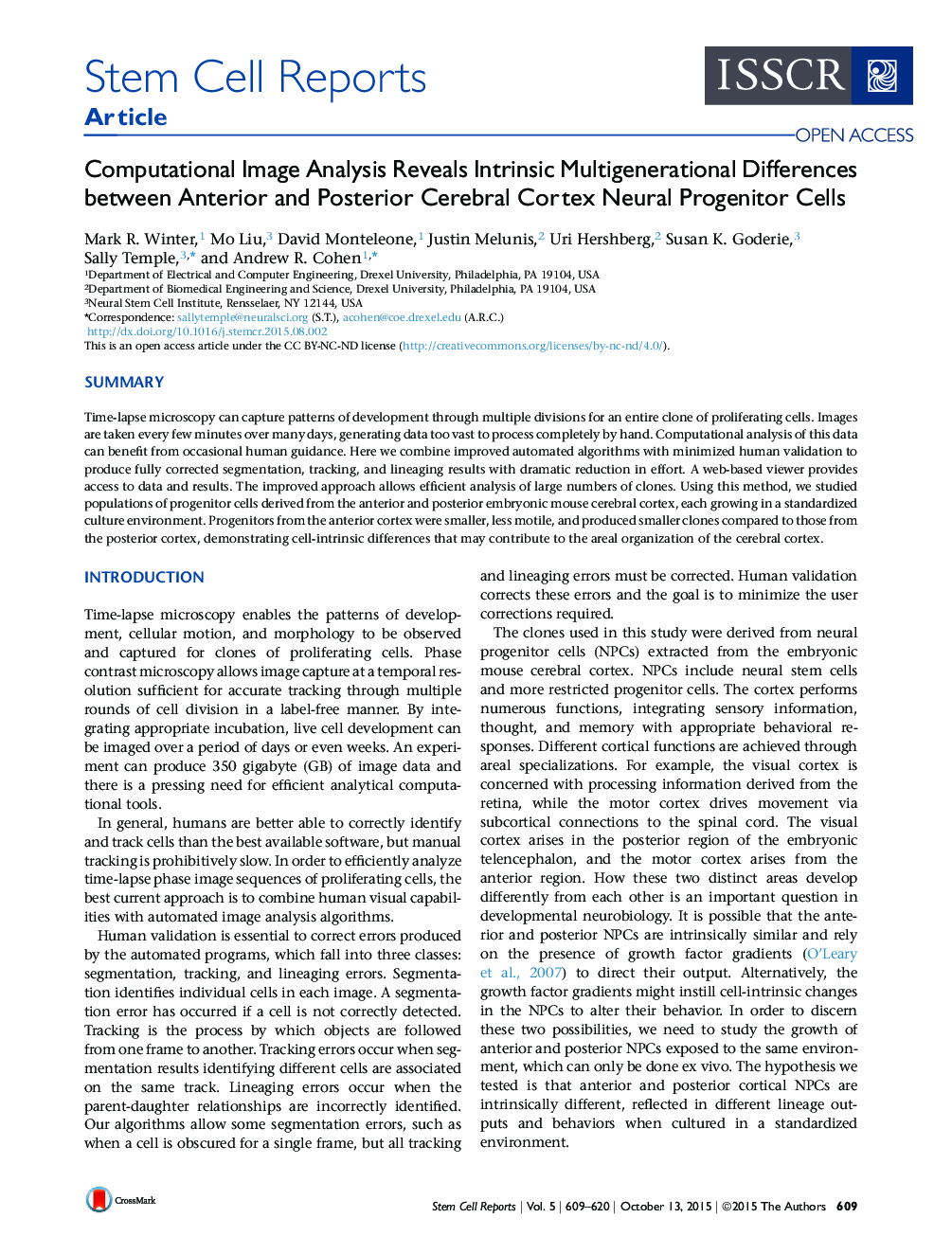| Article ID | Journal | Published Year | Pages | File Type |
|---|---|---|---|---|
| 2093427 | Stem Cell Reports | 2015 | 12 Pages |
•Open-source automated software designed to track stem/progenitor clones in time-lapse movies•Software tools for easy data validation and visualization greatly improve efficiency•Lineage tree reconstruction from hundreds of embryonic mouse forebrain clones•Intrinsic differences in progenitor behavior from anterior/posterior cerebral cortex
SummaryTime-lapse microscopy can capture patterns of development through multiple divisions for an entire clone of proliferating cells. Images are taken every few minutes over many days, generating data too vast to process completely by hand. Computational analysis of this data can benefit from occasional human guidance. Here we combine improved automated algorithms with minimized human validation to produce fully corrected segmentation, tracking, and lineaging results with dramatic reduction in effort. A web-based viewer provides access to data and results. The improved approach allows efficient analysis of large numbers of clones. Using this method, we studied populations of progenitor cells derived from the anterior and posterior embryonic mouse cerebral cortex, each growing in a standardized culture environment. Progenitors from the anterior cortex were smaller, less motile, and produced smaller clones compared to those from the posterior cortex, demonstrating cell-intrinsic differences that may contribute to the areal organization of the cerebral cortex.
Graphical AbstractFigure optionsDownload full-size imageDownload as PowerPoint slide
